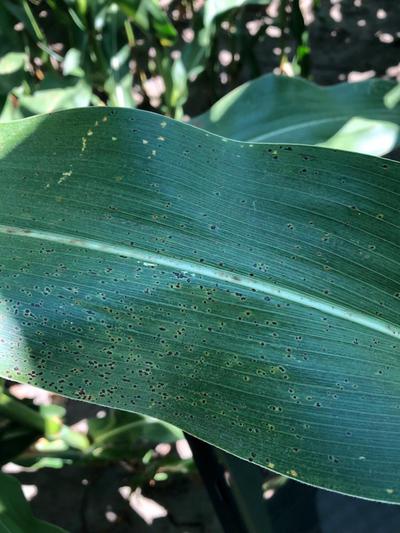Tar Spot
Phyllachora maydis
Fungus
In a Nutshell
- Small, dark raised spots on both leaf sides.
- Surrounded by brownish lesions, "fish-eye" symptom.
- Whole leaf covered in spots, dries off.
Can also be found in
Symptoms
First symptoms are characterized by small, raised yellow-brown spots with a black center on both leaf sides. The spots can be surrounded by circular, brownish lesions with dark edges, commonly called "fish-eye". The circular, oval, sometime angular or irregular spots can coalesce and form stripes up to 10 mm long. The whole leaf can be covered with spots and surrounding leaf material dries up. Symptoms appear first on lower leaves, spreading to upper leaves. Under severe infestation the spots also appear on husks and leaf sheaths. Leaves may die off completely after 21 to 30 days. This will result in the reduction of marketability.
Recommendations

Organic Control
No biological control solution seems to be available against this disease. Please contact us if you know of any.

Chemical Control
Always consider an integrated approach with preventive measures together with biological treatments if available. As of today, no chemical treatment is known for this disease. Please contact us if you know of any.
What caused it?
The symptoms are caused by the the interaction of three fungal species: Phyllachora maydis, Monographella maydis and the hyperparasite Coniothyrium phyllachorae. Two or three days after the infection by P. maydis the lesions are invaded by M. maydis, The fungus can survive in plant debris for 3 months or longer. Spores are spread by wind and rain. Cool temperatures of 16-20°C and high relative humidity favor the disease outbreak. Therefore fields near riverbanks are prone to this disease.
Preventive Measures
- Monitor the lower leaves of your maize plants for small, raised glossy, dark spots or brown lesions.
- Tillage and bury or remove and destroy infected plant debris.
- Plan a crop rotation with different crops.



